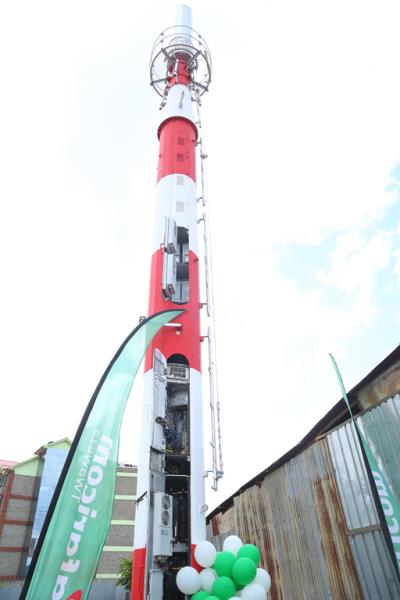08 February 2019

The TubeStar occupies much less land than typically required for a BST and also houses all equipment within a protective tower structure.
Safaricom is trialling new network coverage technology aimed at enhancing coverage in urban areas.
Known as the TubeStar base station, the operator claims the solution replaces the standard tower base station with a tubular structure that occupies up to 75 per cent less land than typically required.
In addition, it says the new BST eliminates the need for a protective compound and perimeter wall by incorporating all equipment within the tower structure.
Furthermore, it’s claimed the technology eliminates the need for diesel generators by replacing these with high-performance lithium batteries.
The TubeStar is targeted at urban areas which present a space constraint when putting up network towers.
Safaricom says building standard towers in such locations has been difficult as most landowners have future plans for currently unused land or have already put up structures on the entire site leaving little space for a typical BST.
Working in collaboration with its technology partner Huawei, Safaricom deployed the first TubeStar at Clay Works along the Nairobi-Thika Highway in December.
It will offer coverage along the Roysambu drift which has long been plagued by call drops.
According to the operator, the location exemplifies the challenges of providing coverage in urban areas as it is in a depression where signals from surrounding base stations converge, resulting in interference and poor connectivity.
Safaricom reckons its base station will exclusively provide coverage in the affected locality eliminating reliance on the other cells.
Earlier in November, Safaricom announced a world first in partnership with Western Union.
M-PESA mobile wallet holders can now send money globally with the activation of M-PESA Global which is powered by Western Union’s cross-border, cross-currency, money movement platform.
They can use funds from their wallets to send remittances across Western Union’s retail agent network in more than 200 countries and territories, or directly via Western Union’s access to billions of accounts.
Western Union says that around 70 per cent of its digital transactions worldwide now originate on mobile devices.







